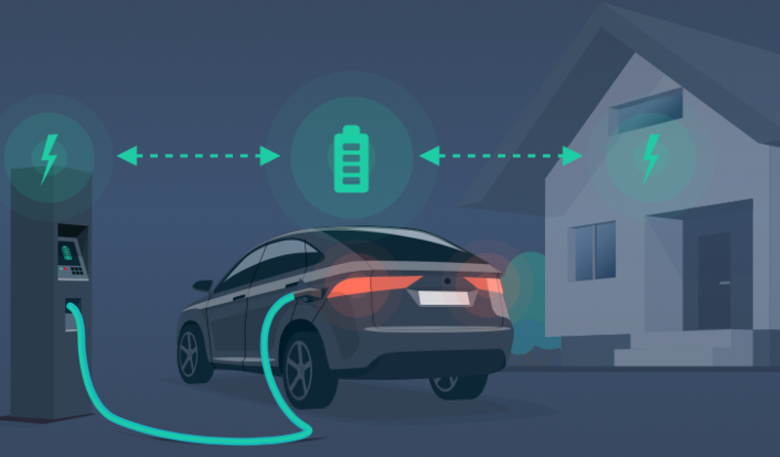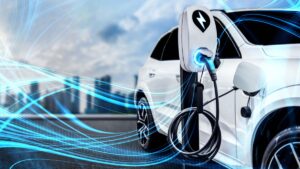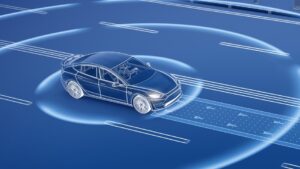Vehicle-to-grid (V2G) technology is a major step forward in connecting electric vehicles (EVs) to the grid. This allows electric vehicles to both use power from the grid to charge their batteries and send power back to the grid when needed. The ability to flow energy in both directions could change the way we use energy, how the grid is managed, and how renewable energy is used. As more people buy electric vehicles (EVs) and demand more sustainable energy solutions, V2G technology is becoming an important part of the quest for more reliable and efficient energy systems.
1. What is Vehicle-to-Grid Technology?
Vehicle-to-grid technology allows electric vehicles to be connected to the grid, allowing energy to be transferred in both directions. V2G-compatible charging stations are often used to connect electric vehicles (EVs) to the grid. When the vehicle is not in use, it can send excess energy from its battery back to the grid. Instead, when energy demand is high or renewable energy sources are insufficient, vehicles can use electricity from the grid to charge their batteries. This bidirectional energy flow makes the connection between electric vehicles and the grid more flexible and dynamic.
2. How Does V2G Technology Work?
To control the flow of electricity between electric vehicles and the grid, V2G technology uses high-tech communication and control systems. The first step is to install V2G-compatible charging equipment. This allows electric vehicles to both charge and discharge. The device connects to the grid and talks to the grid operator to determine the best time to send energy.
When an electric vehicle is connected to a V2G charging station, the system monitors the grid and the vehicle’s battery status. If there is a power shortage or more demand on the grid, the system can tell the electric car to send some of its battery energy back to the grid. Similarly, when the grid has extra power or is not busy, electric vehicles can use power to charge their batteries. This makes the grid more stable and makes it easier to manage energy.
3. Benefits of V2G Technology
Many good things can happen when V2G technology is added to the grid and electric vehicle owners. When connected to the grid, V2G adds a new way to store and deliver energy. This is especially useful in managing peak demand and keeping the grid stable during times of busy or low renewable energy production. Instead of building expensive and polluting power plants, grid operators can use distributed energy resources stored in electric vehicle batteries. This makes energy systems more reliable and sustainable.
People who own electric vehicles (EVs) can receive financing from demand response programs that use V2G technology. These programs provide financing to people who own cars that can send energy back to the grid during periods of high demand. V2G can also help people use energy more efficiently, allowing electric car owners to charge their cars when energy is cheap and plentiful, and sell excess energy back to the grid when prices are higher.
4. Impact on Renewable Energy Use
One of the most important implications of V2G technology is that it can make using renewable energy sources much easier. Renewable energy sources, such as solar and wind, don’t always work. Their output depends on the weather and the time of day. These fluctuations can be compensated for by V2G technology, which in many places provides a way to store energy.
Electric vehicles with V2G technology can store extra renewable energy when there is more and send it back to the grid when demand exceeds supply. This feature helps balance out changes in clean energy production, making its supply more stable. V2G technology helps in the transition to a low-carbon energy system and reduces our dependence on fossil fuels by making it easier to use renewable energy.
5. Challenges and Considerations
While V2G technology can be useful, there are still some issues with its widespread use. Standardizing V2G protocols and infrastructure is one of the biggest issues. For V2G to work, electric vehicles, charging stations, and the electrical grid must use the same communication and control standards. Automakers, charging equipment manufacturers, and utilities must all work together to develop and implement these standards.
There is also concern that V2G will shorten the lifespan and performance of electric vehicle batteries. Frequently charging and discharging a battery shortens its lifespan and reduces its usability. However, improvements in battery technology and management systems have made these concerns less relevant. Researchers are still working to make batteries last longer and find the best charging and discharging methods to ensure they last as long as possible with minimal damage.
Conclusion
In summary, vehicle-to-grid technology is a revolutionary way to manage energy resources and support the development of electric vehicles. V2G technology allows energy to flow in both directions between electric vehicles and the grid. Benefits include making the grid more stable, making it easier to use renewable energy, and potentially even making money for EV owners. As technology advances and more people adopt it, V2G could become an important part of making the energy future more reliable and sustainable.
FAQs
1. What is Vehicle-to-Grid (V2G) technology?
A technology known as vehicle-to-grid (V2G) allows electric vehicles (EVs) to both draw power from the grid and send energy back to the grid. Because energy can flow in both directions, EVs can store energy from the grid when it is not needed and send it back to the grid when demand is higher. This keeps the grid stable and efficient.
2. How does V2G technology work?
Electric vehicles are connected to V2G charging stations, which allow power to flow in both directions between the battery and the grid. The system uses advanced control and communication tools to schedule the timing and amount of energy exchange. When demand on the grid is high, electric vehicles can feed battery power back into the grid. When demand is low, vehicles can be charged via the grid.
3. What impact will V2G technology have on the battery life of electric vehicles?
Electric vehicle batteries often use V2G technology to charge and discharge, which can shorten their lifespan. However, improvements in battery technology and management systems are mitigating these impacts. Researchers are working to extend the lifespan of batteries and find the best charging methods to maximize their lifespan.
4. What do you think is the future of V2G technology?
As battery and electric vehicle technology continues to advance and more people turn to renewable energy, the future for V2G technology looks bright. To address current challenges and take full advantage of V2G technology, stakeholders must continue to collaborate on research, development, and other activities. Government policies and incentives are also important to help more people adopt V2G systems.
5. How does V2G technology help renewable energy use?
As a distributed energy storage solution, V2G technology helps integrate renewable energy. This allows electric vehicle batteries to store excess renewable energy generated during peak production periods so that they can be used when renewable energy generation is low. This helps balance changes in clean energy production and ensures a more stable supply.




